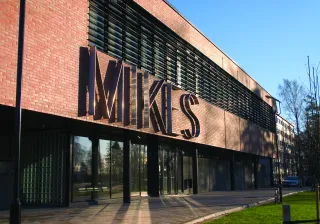Measurement data plays a key role when decisions are made in political arenas, healthcare, and industrial process control. The vaguer that information is and the less the user understands its reliability, the easier it is to use it misleadingly and influence decision-making discreetly. The metrologist's toolbox contains a very effective tool against this: metrological traceability.
Reliable and clearly sourced measurement data prevents misinterpretations
While browsing online recently, I came across the Finnish Meteorological Institute's excellent website, which allows you to study, for example, the monthly average temperatures in different years. I tested how well my memories from past years correspond to the measurement data collected by the Finnish Meteorological Institute.
My memories of a warm June 1988 and a cold June 1994 are based on strong memories of family events. Indeed, in June 1988, the average temperature in Vantaa seems to have been 17.5 °C, while it was 4.8 °C lower six years later.
On the other hand, I have no specific memories of the temperature in June from 1999 to 2000. So, if someone were to claim, based on their own recollections, that June 2000 was also very warm, I might believe that – unless I could not check it from the Finnish Meteorological Institute's time series and say that the claimant was mistaken by one year.
In the same way, it is possible to influence the opinion of decision-makers and the making of significant decisions, either intentionally or unintentionally, if measurement data is presented in a way that does not reveal its reliability and source. The ability to verify the accuracy of the information and frequent enough checks minimise errors related to the knowledge base in decision-making.
Metrological traceability allows you to verify the reliability
As soon as their work begins, the newly elected representatives in the parliaments of the EU, England, and France are faced with difficult decisions: How to promote the well-being and security of citizens so that there is enough budget for everything that is needed?
They need a wide range of research-based information on, for example, climate change, energy production and use, emissions, and technological development as a basis for decision-making. It is paramount that the reliability of the measurement results used in the studies are verified and utilised when analysing them.
As a treaty signed by member states globally, the Metre Convention provides the basis for a global procedure for quality assurance of measurement results. The metrological traceability implemented in accordance with it links an individual measurement result to the internationally accepted SI system of measurement units so that the reliability of the measurement result is known and can always be verified afterwards. Most standards and legislation regulating measurement activities in industries, laboratories, and commerce require metrological traceability, at least for mission-critical measurements.
Traceability ensures comparability of measurement results
In practice, traceability is implemented by regularly verifying the operation of the measurement instrument by comparing it with a known reference and considering the sources of error affecting the measurement situation. In turn, the device used as a reference is linked through a chain of comparisons to the internationally accepted definition of the measurement unit in question.
When the measurement uncertainty has been properly determined at all stages and the results have been documented, the reliability of the result can be quantitatively expressed as measurement uncertainty. Metrological traceability can be demonstrated even long after the measurement event, thanks to documented procedures and results.
To ensure that measurement units are equal everywhere and measurements are comparable, VTT MIKES and other national metrology institutes around the world maintain and develop the SI system of measurement units. Their measurements and calibrations are highly accurate so that measuring devices, even at the end of long traceability chains, can still meet the requirements of their users. The national accreditation bodies (FINAS in Finland) carry out independent competence verifications to make it easy for those using the measurement results to ensure traceability.
Research for more reliable analyses
Both in decision-making and process control, measurement results are collected and analysed to anticipate the future and assess the impact of different options over different time horizons. If we examine, for example, the temperatures in June in Helsinki in different years and decades, taking into account the sources of error at the time of the measurement is not enough. One must also consider the changes that have occurred over time in measuring equipment and methods – especially if the measurement site has changed, e.g. due to new construction.
Efforts are constantly being made to improve the accuracy of the anticipation by developing new measurement technologies. In order to make maximum use of them, more sophisticated quality assurance techniques are also needed.
VTT MIKES is strongly involved in European metrology research programmes developing new methods for a wide range of industrial and societal use. In this way, we can ensure that metrological traceability continues to be a useful and effective tool against influencing with vague information.





